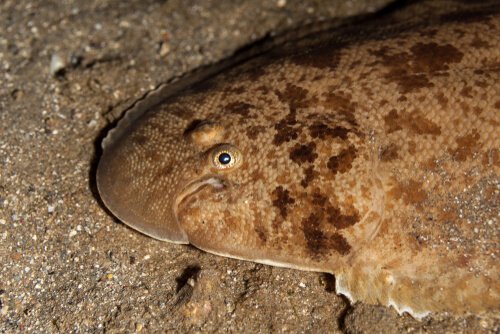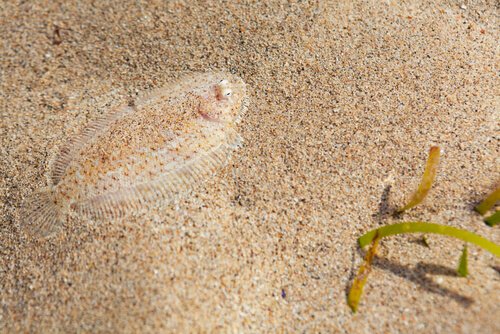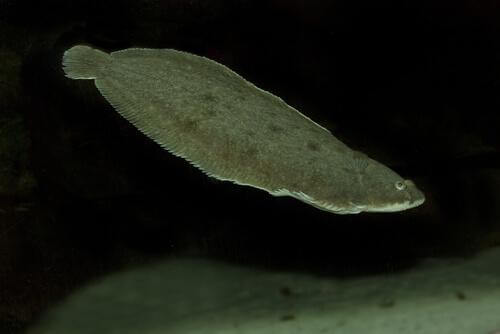Two Common Types of Flatfish: Sole and Megrim

The common sole and four-spot megrim are two common types of flatfish. However, people also tend to mix them up a lot. They may be from the same family, and look very similar, but there are some variations that can help you tell the difference.
Keep reading to learn more about the differences between these two types of flatfish.
Two types of flatfish: common sole and four-spot megrim
General information about the common sole
The Soleidae family includes many different types of flatfish, which all fall under the name of sole. It’s a massive family, with over 120 known species.
The common sole (Solea solea) is the most well-known. It’s also the most widely eaten all over the world.
Anatomically, common soles are thin, dark-green or brown Pleuronectiformes (flatfish). Their colors make it possible for them to hide on the floors of whatever body of water they’re in.
Soles can live in both salt and freshwater environments. If you keep them in a tank, you’ll notice they spend about 90% of their time lying on the floor. Their main source of food are crustaceans, but they’re also vicious predators and can capture all kinds of things.

General information about four-spot megrims
Four-spot megrims belong to the Scophthalmidae family, which also includes turbot and limanda.
The four-spot megrim (Lepidorhombus boscii) is the most common, and most widespread of these. Meanwhile, the megrim, or whiff (Lepidorhombus whiffiagonis) is much less common.
These fish have flat, thin, long bodies between 16-24 inches. They generally weigh between 11-13 pounds. They have translucent bodies with colors very similar to sand. There are also some with blue and silver stripes and streaks along their body.
They live in the cold waters of the northeast Atlantic coast. Like soles, megrim are demersal, which means they live mostly around the floor of whatever body of water they’re in. You can find them in sandy areas from just 20 feet deep to over 2,000.
The megrim’s diet is mainly fish smaller than them (sardines, koi, longhorn cowfish, etc), along with crustaceans, juvenile fish, and cephalopods. If they don’t find food around them, they may even eat other megrim.
The main differences between megrim and sole
As you can see, there are some major differences between megrim and sole. It’s not just their appearance either, there are also differences in habitat and behavior. They’re both popular food options because of their flavorful, tender meat, but they’re ultimately very different.

Anatomical/morphological differences
Body shape is one of the main differences between these two types of flatfish. Megrim are long, thin, and translucent, whereas sole are more oval-shaped and slightly asymmetrical.
Then there’s the position of their eyes. Sole have their eyes on the right side of their body and they’re farther apart from each other. Megrim’s eyes are darker, closer together, separated by a bone, and are on the right side of their body.
The lower parts of both their bodies are a light, cream-color. Sole have a brown, greenish upper part, whereas megrim are more sandy-colored.
There are a couple of other interesting aspects to sole. Firstly, their mouths jut out in the shape of a “U.” Secondly, they have scales on both sides of their body.
Habitat and distribution
Both megrim and sole live close to, or right along the floors of the bodies of water they inhabit. Megrim generally live in deeper water, closer to 2,000 feet. Sole, however, tend to stay in shallower water, between 30-1,000 feet.
Because of the huge variety, sole are much more spread out in the world than megrim. Unfortunately, because they’re in such high demand, sole are actually in danger of extinction.
